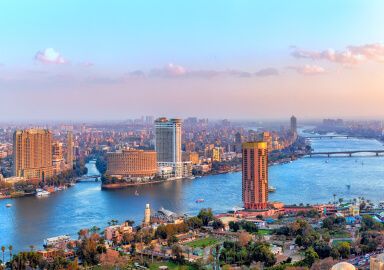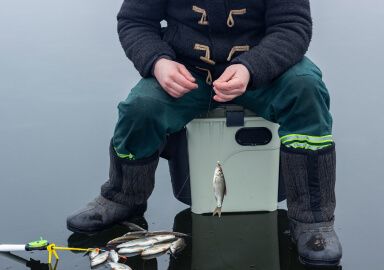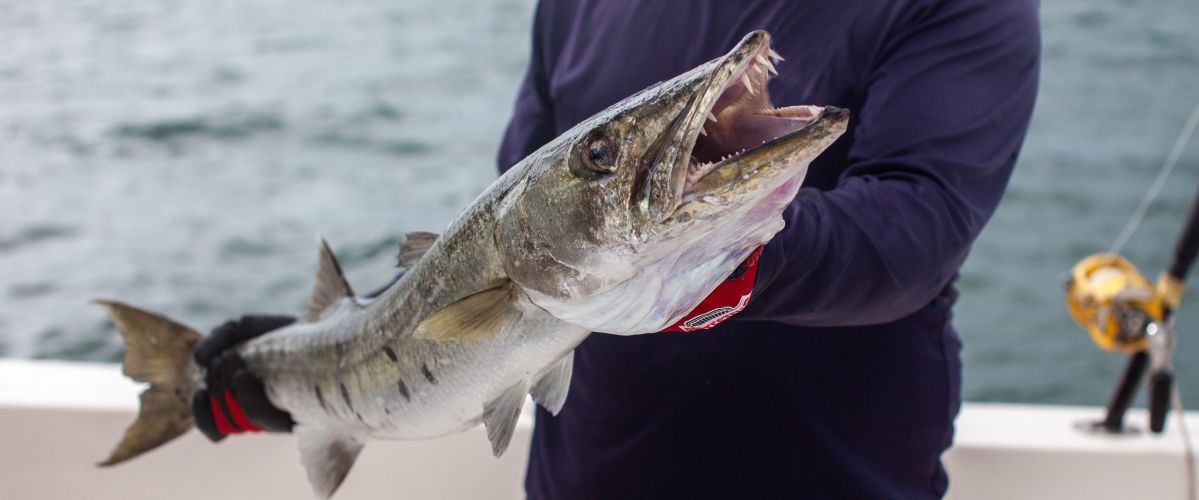Great Barracuda
Barracudas are torpedo-shaped, fast-moving top predators that can attain a large size, consume fish as long as themselves, are feared by swimmers but fancied by many sport anglers.
View 41 listings
41
listings
–
price starting from
8
countries
–
to the nearest trip
Where and When?
The greater barracuda can be found throughout the world’s warmer oceans with developed fisheries in Australia, Africa, Asia and the Americas at many localities scattered around the lower latitudes. They may be caught from all the continents except Antarctica but most sport fishing for barracuda is centred in the Americas in places like Florida, Texas, Brazil and around the Caribbean. Parts of the west and east coasts of Africa also provide some good boat or land based barracuda fishing in countries such as Kenya and Tanzania. Northern Australia and the Great Barrier Reef also produce excellent specimens of greater barracuda and thus some first rate sport.
About Great Barracuda
The family Sphyraenidae, the barracudas, contains 27 species and while many are medium to large fish the greater barracuda (Sphyraena barracuda) can reach two metres in length and a mass of over 50 kilograms. Several species of barracuda are present in most areas but, where it is present, the greater barracuda is usually the prized target of most sport anglers. It is a predator of the open ocean, coral reefs as well as estuaries and lagoons and occurs throughout the tropical and subtropical oceans. They spawn in the ocean but juveniles are often found well inside estuaries where food and cover is much more readily available than in clear water oceans. Young specimens often shoal but, as they grow, they usually become more solitary while aggregations of larger fish can build up around shoals of small fish. They have several fierce rows of very sharp, pointed teeth which they use to seize prey or simply cut it into pieces for swallowing. There are reports of swimmers being attacked but, while this appears to have taken place, the fish were probably not actively targeting humans but rather accidentally biting them in a feeding frenzy.
How to Catch?
The greater barracuda may be targeted in the open ocean, as well as estuaries and coastal waters, and can be fished for from boats, jetties or even the shoreline. In terms of tackle, this species is a true top predator and, due to its ability to capture big food items, larger lures are often the best. Live bait is probably the most consistent way of catching barracuda, but artificial lures, both spinning and flyfishing, can also be used with success. A barracuda’s teeth really are impressive in that they are many, strong, obvious and very very sharp. Use a wire trace to prevent the loss of expensive lures, to say nothing of a large fish. Unhook the greater barracuda with extreme caution, if you want to keep your fingers intact. Most barracuda are probably caught when other species are targeted as some view this fish as “smelly and slimy” but to land a large barracuda is an exciting, exhilarating and difficult operation often ending badly for the angler, less so for the fish.









